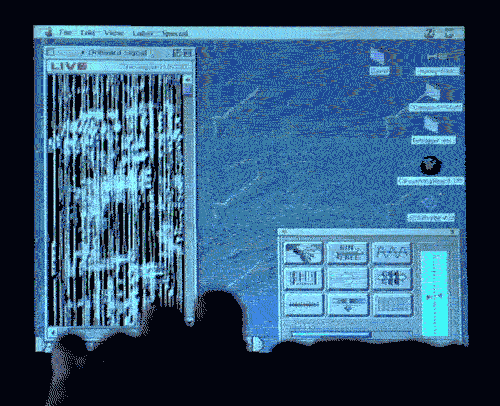![]()
The Thwaites Countdown
You might recall hearing once upon a time about Archimedes, the ancient Greek mathematician who discovered the principle of buoyancy that bears his name when he took note of how much water his body displaced out of his bathtub as he got in.
With that principle of liquid displacement in mind, scientists are tracking the worrisome movements of a glacier down in Antarctica the size of the state of Florida. Were the Thwaites Glacier to plop into the ocean all at once, its massive volume would cause the sea level around the world to rise by two feet. This scenario could be made even worse if Thwaites’ demise works like “a rotting support beam [that] lead[s] to the toppling not only of a wall but of an entire house.”
Not to alarm you, but a massive hole recently found under Thwaites — six miles long and 1,000 feet deep — has scientists fearing that the glacier is melting faster than they first thought.
 Using Math to Map the Brain
Using Math to Map the Brain
More evidence that, other than possibly black holes, there may be nothing in the entire universe as complex as the human brain. Evidently it takes 11-dimensional geometry to describe the shapes of neural connections in the simulated brain … of a rat.
 The Freaky-Deaky Intersection of Bitcoin, CRISPR and Transhumanism
The Freaky-Deaky Intersection of Bitcoin, CRISPR and Transhumanism
Two months ago I noted the controversy surrounding Dr. He Jiankui and his non-therapeutic use of CRISPR gene modification technology to edit the DNA of two recently-born twin girls. Yes, his actions violated scientific norms and medical ethics, but those violations only matter to people who seek to travel in the smoothly-paved lanes of scientific and medical professionalism.
But, if you’re not interested in such things as credentials and funding, then those norms and group standards have little to no power over you. Meaning, if you’re an unaffiliated private citizen who believes in the transhuman vision of using science and technology to evolve beyond the current definition of “human,” and you’re flush with bitcoin wealth, then there’s little to prevent you from venturing forward into the shrouded mists of genetic manipulation. Self-described “do it yourself biohacker” Bryan Bishop is one such fellow, and he has plans to do more than just some personal tinkering. He thinks there’s a huge market waiting to be served for this sort of service.
 Weaponizing DNA Into Malware
Weaponizing DNA Into Malware
This is about a year and a half old now, but somehow I missed hearing about it until this week. A group from the University of Washington figured out a way for to turn DNA into a computer virus. The idea works like this: create a synthetic strand of DNA, in which the ordered pairs of A-T and G-C are used to code the instructions of a malicious piece of software. Then, when the DNA is sequenced, compiled and compressed by the the sequencing software, the coded data gets recognized as programmatic instructions, and the virus sets up shop.
Yes, the work is just barely above the proof-of concept stage and is hardly a viable technology as yet. Here’s hoping it’s ready by the time we find ourselves rebelling against our computer-controlled, robot masters.
 Better Student Behavior Through Data
Better Student Behavior Through Data
Elementary schools in nearby Hamilton, Ohio, have turned to “student discipline tech using real-time data” to improve student behavior. This system, known as PBIS — Positive Behaviors & Intervention Supports — involves an online referral system for collecting data of student behavioral incidents. That data is then used to produce charts, graphs and campus maps showing behavioral hotspots, with the goal being that better data will lead to better response decisions and efforts.
Because the news article was a bit light on the details of just how the system works, I surfed over to pbis.org to try to find out more. Instead, I ran into an impenetrable maze of bureaucratic jargon, overly verbose pages, and a site design where information density and complexity appear to have been the guiding principles … rather than ease of use and simple to understand. What a shame: I was genuinely interested in learning more.


